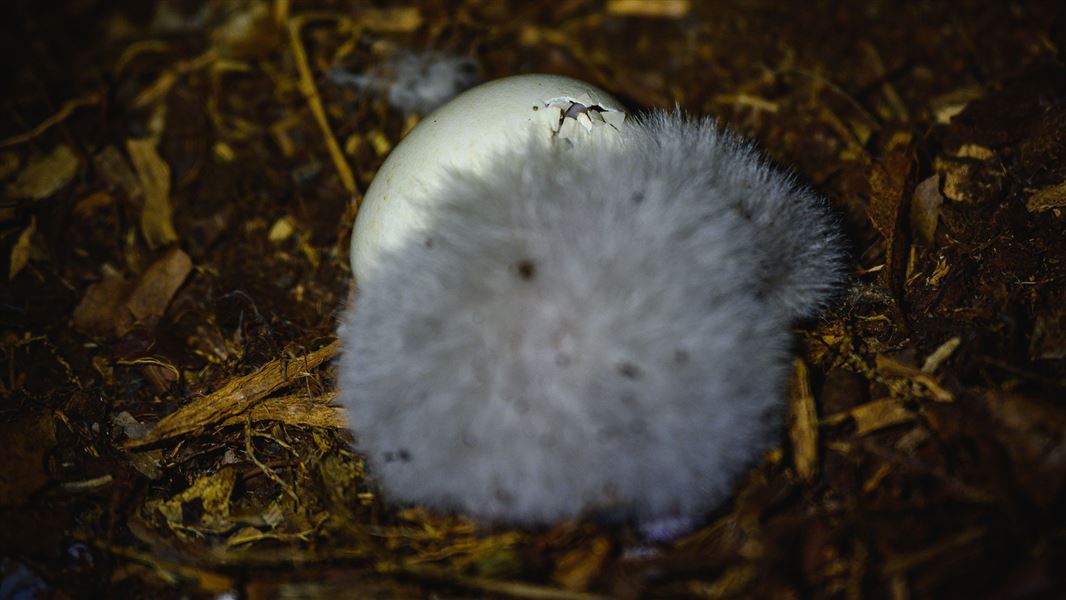Archived content: This media release was accurate on the date of publication.
Date: 02 February 2022
Nineteen-year-old kākāpō Pearl has produced the first chick of the year – Pearl-A-1-2022. The chick was observed in the nest at 2 am yesterday morning (1 February) looking fluffy enough for staff to conclude it was a January chick. The chick’s name comes from the naming convention for the species – mother’s name, egg number, and the year.
Although Pearl-A-1-2022 is the first of Pearl’s 2022 clutch, she also has two other eggs, due to hatch over the next few days. One is in her nest, while the other has been moved to an incubator on Anchor Island to give it the best chance of survival. It will be buddied up with a chick of a similar age and reared by a foster mum.
Baby Pearl-A-1-2022 received a health check at 5am this morning (2 February) and weighed 37 grams – and appeared to be in good health.
The new arrival means there are now 202 kākāpō in existence. Kākāpō only breed every two to three years so each breeding season is critical to the future of this taonga species.
DOC Kākāpō Operations Manager Deidre Vercoe says hatching time can be nerve-wracking for staff but also wonderful. “It’s a huge reward for hard-working team members to know there is growing hope for kākāpō, with every healthy chick that hatches.”
DOC’s Kākāpō Recovery Team, alongside Ngāi Tahu, has worked to bring kākāpō back from the brink of extinction, steadily growing the population from a low of 51 birds in 1995.
“The kākāpō team of 2022 has a very unique challenge,” says Deidre Vercoe. “That is, how to manage a significant and infrequent breeding event for a critically endangered species, in the middle of a pandemic.
“As the kākāpō population grows, we have been reducing the intensity of breeding management. The pandemic could push the reduction of this hands-on work further. Insights gained from this unique situation will provide valuable information to guide future breeding management approaches.
“With help from our national kākāpō partner Meridian Energy, a new power system was recently installed on Whenua Hou, providing more reliable (and more renewable) power to run incubators, brooders, and the huts, which house the kākāpō ranger teams on the ground.”
With continued growth of the population, future challenges for DOC’s kākāpō team will also include finding new predator-free islands and sanctuaries for the birds to live.
Contact
For media enquiries contact:
Email: media@doc.govt.nz
